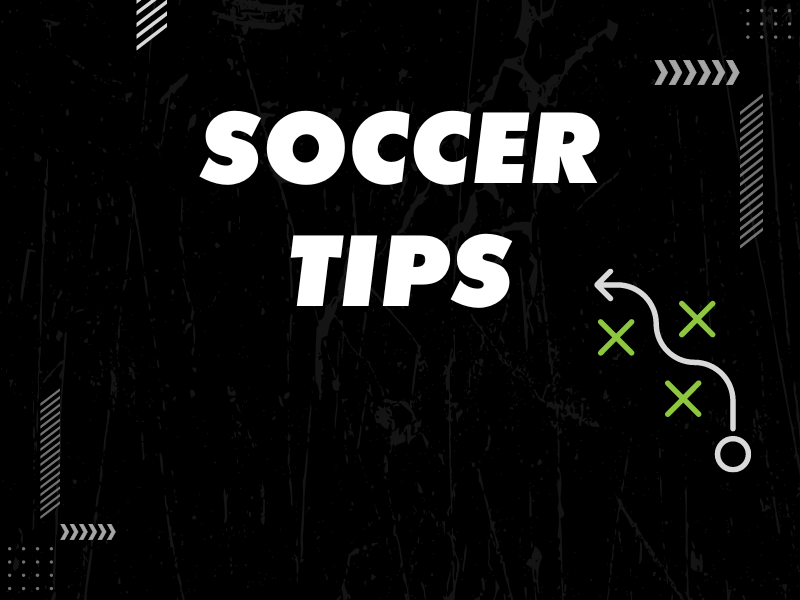Update: Take a look at the Coerver Goalkeeping Essentials DVD.
There is a point in each keeper’s development that they realize that being a keeper isn’t just fun and games. They realize their performance and development directly impact the team and in many cases the win or loss column. I think I realized this around 14 years old, which was my freshman year of high school. Like the majority of keepers I didn’t have a goalkeeper coach or a head coach that new much about my specialized position.
I realized that in order for me to increase my technique and game awareness I needed to start developing my own training regiment to the best of my abilities. Without knowing the psychology of it all I started developing practice goals for the day and short term goals to attain before my next match. I shared these with my back up and the JV keepers.
Learning to set goals will give a keeper the ability to develop a clear course of action on where they want to go (performance level) and how to get there. The first stage of this is to set “Performance” based goals rather than “Outcome” goals. Outcome goals are not entirely under our control. An example of this could be number of saves.
Performance goals are something keepers can control. Such as “ I am going to attack floated crosses played in the air above my head at my highest point”. There is nothing wrong with a keeper stating a goal such as “ I want to make All Conference or All State”. Ambition is great. More importantly is the “how” will that goal be attained.
Make the performance goals realistic; goals that challenge you but are attainable. If a goal is too easy there will be nothing learned or gained by the exercise. An unrealistic goal may also be a detriment since the satisfaction of an accomplishment may never be felt or measured. Set goals in measurable and behavioral terms. “This training session I want to ……” or “This game I will organize and communicate effectively with my central defenders.”
Detail the performance based goals in short and long terms. Short term range goals provide the opportunity to see immediate improvement. Short term goals help to motivate and are steps toward your longer range goal. Longer range goals could be season goals our yearly goals. An example of a Long term yearly goal could be “ Before I return to camp next year I would like to become better at timing and patience when coming out on breakaways”
It is important to write your goals down on a paper. Seeing them in writing helps keep a clear focus. In my mind, it also makes them real if they are on paper. Weightlifters keep a journal that documents their daily workouts to track their progress. Keepers can modify this technique and write down each practice goal as it progresses or builds to a short term goal for a specified date. This allows them to track their progress, reflect on where they started, how far they have come, and also helps detail training exercises that worked well to achieve the desired result.
This technique helps make their commitment to achieving the goal stronger and also creates a sense of accomplishment at competition. Once these goals have been identified it is not only important to document them but to also identify target dates. “By When”. Again be challenging but reasonable when selecting a date. Don’t expect to be proficient with breakaways within a week.
Goals should be set for practice and for competition. Practice goals as mentioned are often critical to achieving game goals. The daily practice goals should be positive statements. “Today I am going help improve my catching and absorbing of harder shots at the body to limit my number of rebounds”
The next step in goal setting is to identify a keeper’s support and feedback network. Keepers are under constant scrutiny from fans, teammates, coaches, and the opposition. Keepers should identify a support network that can help achieve their goals. Identify who amongst the network can provide constructive feedback. Obtaining feedback from others helps keepers attain a sense of accomplishment and helps keep the focus clear. Often we are our own worst critics, which is why keepers rely on others also for positive feedback. In the right mindset and at the right time self-assessment is vital to a keeper’s individual development. It too can keep the mind focused and driven.
The time for self-assessment is after practice and especially after games. Teammates feed off of a keeper’s emotion as do the other team. Other than excitement a keeper should not show much emotion. If a soft goal is conceded it must be filed away in a keeper’s head for after the game. The best way to deal with the situation and the resulting emotions is to correct the mistake in their head quickly, file it away, and then begin focusing their energy on the next play. That goal is gone. To help prevent another mistake it is important to stay in the present. No need to think about the past goal or anticipate the future. After the game the keeper can sit with their support network, coaches, and reflect on the mistakes to identify development opportunities and goals before the next game.
Example of goal setting
Long Term Goal: Dominate the box on crosses
By October 15th. Short range goal: “ I am going to attack floated crosses played in the air above my head at my highest point”
By September 30th. Day 1, Sept 23rd: Work on driving the appropriate knee up and landing on two feet. Attack the ball above my head at my highest point. Hand Services from shorter distance
Day 2, Sept 24th: Continue with using the appropriate knee and attacking the ball at my highest point. Introduce pressure and harder services.
• This will build up each day until the Sept 30th. Long term and short term goals should stay constant within a date range but the daily goals should be written down and crossed off when completed or accomplished.
Each time a keeper steps on the pitch it is a learning experience whether it be a practice or game. Goal Setting will help prepare a keeper for match play and guide their technical as tactical development. Each keeper learns and progresses differently. The introduction of goal setting techniques will help young keepers focus their energy on one technical element rather than trying to be Tim Howard after one session. The result will be a sense of accomplishment and noticeable growth. At times we are our own worst critics. As coaches, we are also responsible for providing positive feedback and managing expectations.
Each summer I make this a lecture topic for advanced keepers at Star Goalkeeper Academy. Dan Gaspar, the founder of Star Goalkeeper Academy, details many of these points in his instructional manual “The Ball Stops Here”
By: Christian Benjamin, www.keeperstop.com writer and Goalkeeper Coach
More Goalkeeper Information:















